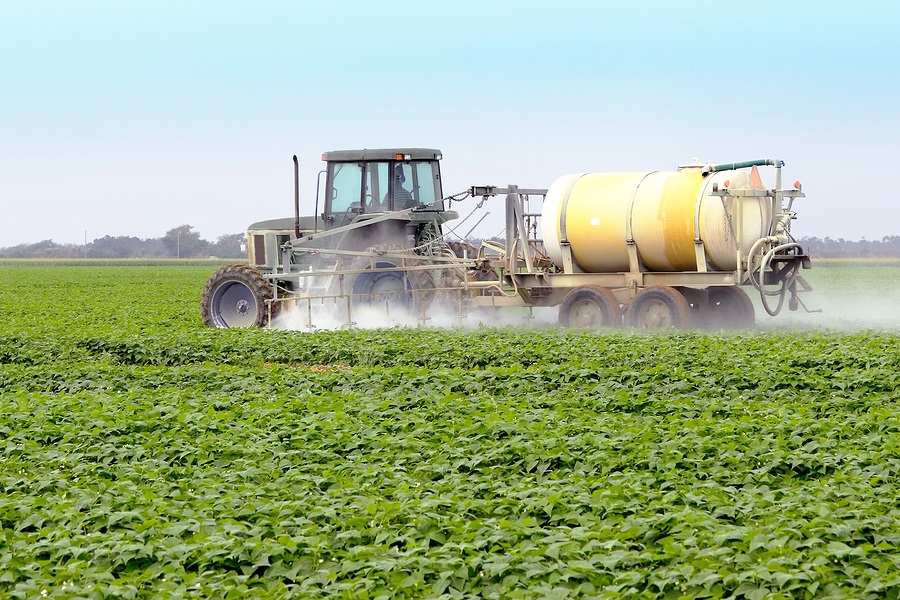Toxic chemicals: How your clothes can harm your health
(NaturalHealth365) The relationship between clothing and wearer is an extremely personal one. We not only rely on our wardrobe to protect our bodies – and our modesty—but also to project an image and make a statement regarding who we are –or who we think we are.
Probably the last thing we expect of our clothes is for them to contain and release dangerous toxins that can threaten human health and the environment – but this is exactly what is happening.
Are your clothes toxic? To find out — and to discover safer alternatives — read on.
Synthetic fibers are the primary culprits of toxic chemicals in clothing
Over the past 15 years, the consumer demand for synthetic fibers – such as polyester, rayon and nylon – has doubled, resulting in a major increase in harmful byproducts being produced by the clothing industry.
Emissions from the manufacture of polyester include volatile organic compounds – which contribute to the formation of ground level ozone, a primary cause of asthma and emphysema. Particulate matter and hydrogen chloride gas are also spewed into the atmosphere.
And researchers have learned that synthetic fabrics play a major role in global “plastic pollution.”
A shocking new study has shown that tap, well and spring water the world over is now contaminated with microplastic fibers, with 83 percent of the samples showing contamination. The shedding of microscopic fibers from synthetic clothes is a major factor – and it is caused by normal wear and tear, as well as by ordinary laundering.
In a study conducted at Plymouth University in the UK, researchers found that acrylic and polyester fabrics are the worst offenders – with acrylic releasing close to three quarters of a million particles per wash.
Despite the toxic substances used to produce them, fabrics in the United States do not have strict labeling requirements in regards to chemicals. In fact, the only mandatory requirements are fiber content, the country of origin and the manufacturer.
Long list of restricted chemicals feature carcinogens and other unwanted toxins
In response to growing concern from consumers and environmental safety activists, the U.S. Environmental Protection Agency (EPA) has enacted EPCRA, the Emergency Planning and Community Right to Know Act.
EPCRA mandates that textile industries report on manufacturers’ compliance with federal regulations – particularly in the area of Toxic Chemicals Release Inventory Reporting. The act also requires that manufacturers be certified in order to prove they are complying with guidelines governing the use of potentially hazardous products.
The list of restricted hazardous chemicals currently used in fabric manufacturing and processing contains substances of jaw-dropping toxicity. Among them are chlorinated phenols, benzenes, formaldehyde, extractable heavy metals, toluene and residual pesticides.
Phthalates – which have been linked with reproductive abnormalities – are also on the list, along with polychlorinated biphenyl, or PCBs. PCBS are known neurotoxins that are classified as persistent organic pollutants.
Many of these substances leave a residue that remains through several washings – before leaching out into runoff in your washing machine, where it enters the environment through domestic wastewater.
Warning: Avoid these synthetic fabrics at all costs
Polyester is made from petroleum, a non-renewable resource. Experts report that synthetic polymers in polyester are capable of emitting greenhouse gases in more than 300 times the amount generated by carbon dioxide.
Rayon, acetate, nylon and triacetate are made from cellulose or wood pulp — then treated with caustic soda, ammonia, acetone and sulphuric acid during processing.
Acrylic fibers are produced using polycrylonitriles. An EPA fact sheet states that polycrylonitriles, when inhaled, have similar effects to cyanide. Workers exposed to high concentrations can suffer anemia, nausea, leukocytosis, jaundice and kidney problems.
Clothing that claims special virtues, such as “stain-resistant,” tends to contain even higher levels of dangerous chemicals.
For example, “no-iron” or “wrinkle-free” clothing is processed with perfluorinated chemicals, or PFCs. The EPA has warned that PFCs – often used in school uniforms, by the way – cause cancer.
“Moth-repellent,” “stain-resistant” and “fire-retardant” garments use polybrominated diphenyl ethers, or PBDEs. They have been associated with hormonal imbalances, thyroid disorders and problems with brain development. PDBEs can accumulate in tissues and in fat cells, with traces being found in human breast milk.
Finally, “pre-shrunk” clothing uses formaldehyde, which can cause allergic reactions – particularly in newborns.
Organic, natural clothing helps to minimize your exposure to toxins
Environmentalists report that virtually all clothing, including “organic” and “natural fiber,” may be exposed to some chemicals during processing – but in smaller quantities than synthetics.
The best way to reduce toxic burden from clothing is to choose natural fibers such as cotton, silk, linen, hemp, cashmere and wool. “Green” fashionistas are giving high marks to ramie, a fabric made from China grass. This durable, attractive and comfortable natural fabric is ideal for warm-weather wear.
In order to be considered organic, the fibers must be obtained from farms that don’t use chemical pesticides, and must have been woven, spun, scoured and finished without the use of chemicals or finishing coats. Dyes used in organic clothing must be environmentally friendly – as opposed to synthetic azo dyes that require large amounts of heavy metal salts to fix the dye to the fabric.
If possible or practical, consider buying high-quality European garments. Made from superior quality raw materials, these garments require little chemical processing. Another “plus” for European fabrics is that European regulations call for the manufacturer to list the specific name and quantity of the chemicals they do use – making for better disclosure.
Although European clothes may require a greater investment, their durability makes them a bargain in the end.
The textiles industry uses over 600 different chemicals in the manufacture and processing of clothes – yet it isn’t required to list any of them on the labels. Maybe it’s time to stop investing in toxin-laden synthetic apparel – and instead choose flowing silk, comfortable cotton, warm wool and luxurious cashmere.
Sources for this article include:
BrightHub.com
BrightHub.com
BodyEcology.com
TheFreeLibrary.com










